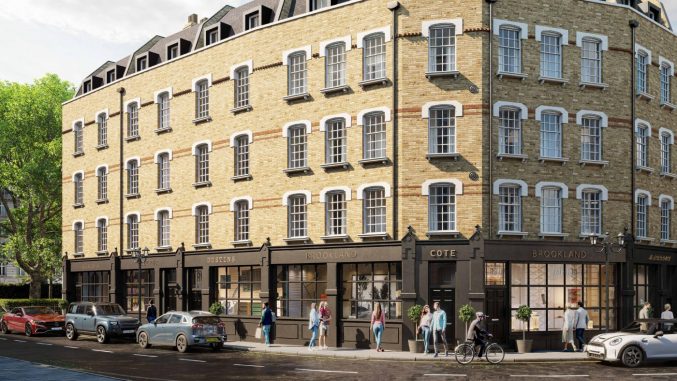A third of Brits would sacrifice their gardens in favour of a self-build property
By Bridging Loan Directory

A third of UK homeowners would give up part of their garden to build their own new house, it has been revealed, after the Government launched its new £150m Help to Build scheme.
More than 34% are prepared to take on a major self-build project to create a property for themselves or a family member to live in, or to sell, according to the results of a new survey by specialist lender Together.
Of those who would attempt a self-build, 14% said they’d do so to create a permanent home for a family member, 10% would build a house they would sell and 8% would move in themselves.
The survey results, are published for the first time today after Housing Secretary Robert Jenrick announced details of the Government’s new Help to Build Scheme, designed to make it easier and more affordable for people to build their own homes.
Scott Clay, distribution development manager at Together, said:
“We’re finally seeing the end of more than a year of lockdown and our survey highlights homeowners’ ambitions as we begin to return to a different kind of normality.
People are thinking more creatively about how they could use their outside space, whether that is providing a standalone home office, a home for themselves to live or sell, or a specially-designed home for elderly or disabled relatives.
It’s important that homeowners have enough space and get any required building consent, including planning permission, before they take on a self-build.
They will also need a lot of planning, determination, and the right finance in place before they start their project.
However, as well as Help to Build, there are other options of funding your own build, depending on the borrower’s ability to repay the loan.
This could be through an advance from an existing lender, a self-build mortgage, or a remortgage, bridging loan or other types of property finance from a specialist lender.”
The survey also found that more than a quarter (26%) would, with the right planning permissions and space, install a standalone ‘granny annexe’ to use when friends or family visit, as extended families look for ways to live closer together after being kept apart during the pandemic.
One in ten (10%) would take advantage of the increased popularity of staycations by renting one out as a short-term holiday let though online lettings such as Airbnb, and 8% would let long-term.
The most popular big-ticket items on people’s shopping lists were a summerhouse or workshop with a fifth (20%) of respondents saying they’d install these to create their dream garden.
Duncan Hayes, a spokesperson for the National Custom and Self-Build Association (NaCSBA) said:
“When considering options for garden plots it is important to understand the approach of the local planning authority.
The right proposals in the right areas can help with the delivery of better and more sustainable homes that we urgently need.
Care is needed as many will have specific policies to prevent inappropriate development of gardens that may cause harm to the local area.
NaCSBA recommends that anyone wanting to build should sign their local self-build register and check out the planning policies on their local council’s website in regard to creating new dwellings in a garden.”
Andrew Baggot, managing partner and chartered accountant at Clarke Nicklin shares his insights on the tax implications to consider with self-build projects:
“As far as tax is concerned there are a few matters to bear in mind with a self-build project.
Firstly, there is the advantage of there being a VAT scheme whereby you can recover the VAT on most labour and material costs involved.
The claimable elements of the costs would need assessing, and you would need to submit a claim to HMRC within three months of the completion of the project to get back the VAT incurred.
There shouldn’t be any Stamp Duty Land Tax (SDLT) to pay on the self-build, on the basis that it is being built in the owner’s own garden.
However, one tax which might need to be considered in more detail is Capital Gains Tax (“CGT”). Your primary home is exempt from CGT.
Although, as soon as you’ve acquired a self-build home you then have two properties, only one of which can be exempt from CGT.
It’s therefore important to plan ahead if you’re then thinking of selling one of the properties so that you minimise any tax that might become payable”.










You must be logged in to post a comment.